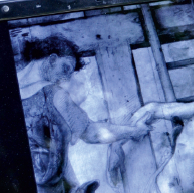
Doutoramento em Ciências da Terra e do Espaço
FRAGMENTATION DURING PRIMORDIAL STAR FORMATION
Jayanta Dutta

Orientação: n/a
Understanding the physics of the very first stars in the universe, the so-called Population III (or Pop III) stars, is crucial in determining how the universe evolved into what we observe today. In the standard model of Pop III star formation, the baryonic matter, mainly atomic hydrogen, collapses gravitationally into small Dark Matter (DM) minihalos. However, so far there is little understanding on how the thermal, dynamical and chemical evolution of the primordial gas depend on the initial configuration of the minihalos (for example, rotation of the unstable clumps inside minihalos, turbulence, formation of molecular hydrogen and cosmic variance of the minihalos). We use the modified version of the Gadget-2 code, a three-dimensional, smoothed particle hydrodynamics (SPH) simulations, to follow the evolution of the collapsing gas in both idealized as well as more realistic minihalos. Unlike some earlier cosmological calculations, the implementation of sink particles allows us to follow the evolution of the accretion disk that builds up in the centre of each minihalo and fragments. We find that the fragmentation behavior depends on the adopted choice of three-body H2 formation rate coefficient. The increasing cooling rate during rapid conversion of the atomic to molecular hydrogen is offset by the heating due to gas contraction. We propose that the H2 cooling, the heating due to H2 formation and compressional heating together set a density and temperature structure in the disk that favors fragmentation. We also find that the cloud’s initial degree of rotation has a significant effect on the thermal and dynamical evolution of the collapsing gas. Clouds with higher rotation exhibit spiral-arm-like structures that become gravitationally unstable to fragmentation on several scales. These type of clouds tend to fragment more and have lower accretion rates compared to their slowly rotating counterparts. In addition, we find that the distribution of specific angular momentum (L) of the gas follows a power-law relation with the enclosed gas mass (M), L ∝ M1 . 125 , which is controlled by the gravitational and pressure torque, and does not depend on the cloud’s initial degree of rotation and turbulence.




